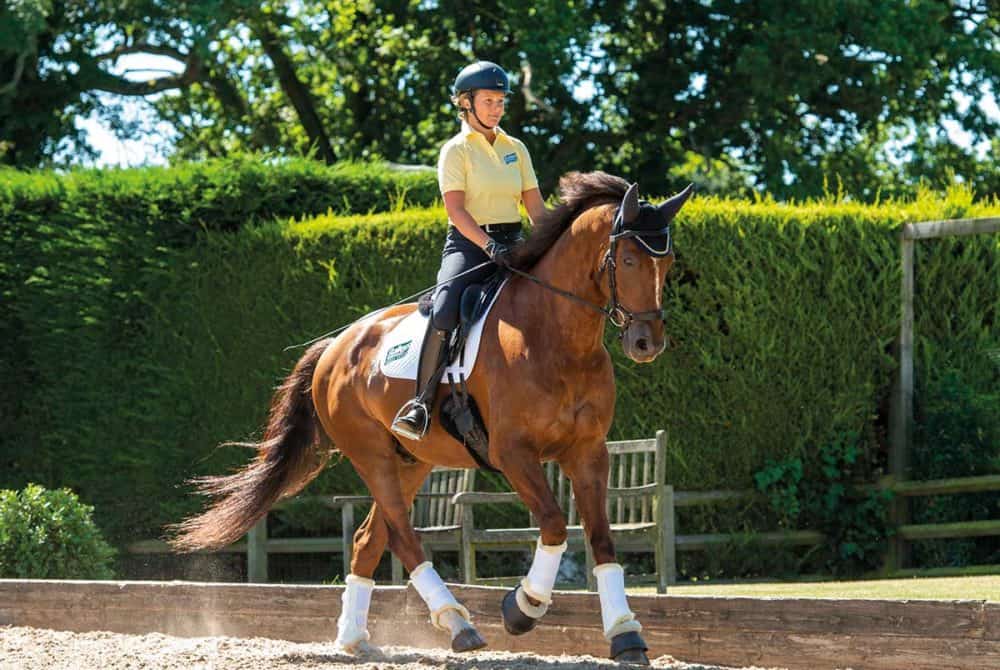Simple Changes with Dan Sherriff
Posted 9th November 2020
Thinking about stepping up to Elementary? Eager for a new challenge in the school? Dressage virtuoso Dan Sherriff shows you how to introduce simple changes

A test of your horse’s ability to collect his gait, his connection and throughness, simple changes appear at Elementary level, but are also a fun, rewarding and valuable movement to work on even if you aren’t so competitively inclined. By picking the simple change apart and looking at its constituent transitions – and with time dedicated to establishing gears within canter – you’ll likely make swift progress and produce a pleasing end product.
What is a simple change?
At a glance, it’s a change of canter lead via walk – in a test situation, three to five walk steps are required. While you can make the most of the arena when practising at home – using a corner to set your horse up for a walk-canter, for example – in competition the placement of a simple change might not be so forgiving. This makes it even more important that you put the work in behind the scenes for a polished and elegant movement in your tests.
Elementary: What’s in store
Prelim and, to an extent, Novice, don’t require too much polish in your horse’s way of going. However, as you reach Elementary territory, the expectation is that your horse will be more consistent in the contact and engaged – that is, he’s more up in the shoulder and his hindquarters are pushing forward under his body to give a more compact, powerful picture.
It’s a clear step up from Novice, and as well as simple changes you’ll be expected to perform…
- collected trot and canter
- extended walk and trot
- shoulder-in
Thankfully, your work perfecting simple changes will also go a long way towards helping conquer these next-level movements.
Before you begin
In order to start working on simple changes, your horse needs to understand canter aids and that they differ from merely “go faster”. This means his trot to canter transitions will be well established, and he’ll be used to switching from using the muscle groups used in trot to those required in canter at the touch of a button.
In your trot-canter transitions, you’re working on your flying changes of tomorrow. You’re looking for your horse to react to and accept the aid obediently and cleanly without throwing his head up, breaking your connection to the bit.
Start introducing simple changes to your schooling with the help of Dan Sherriff. Find out more in January Horse&Rider, on sale 12 November.










